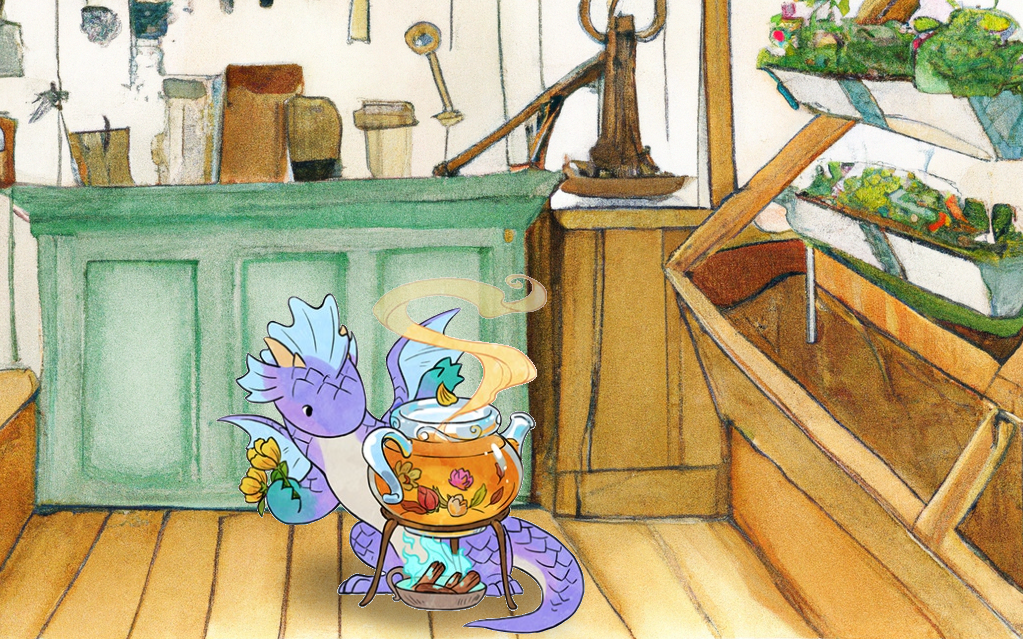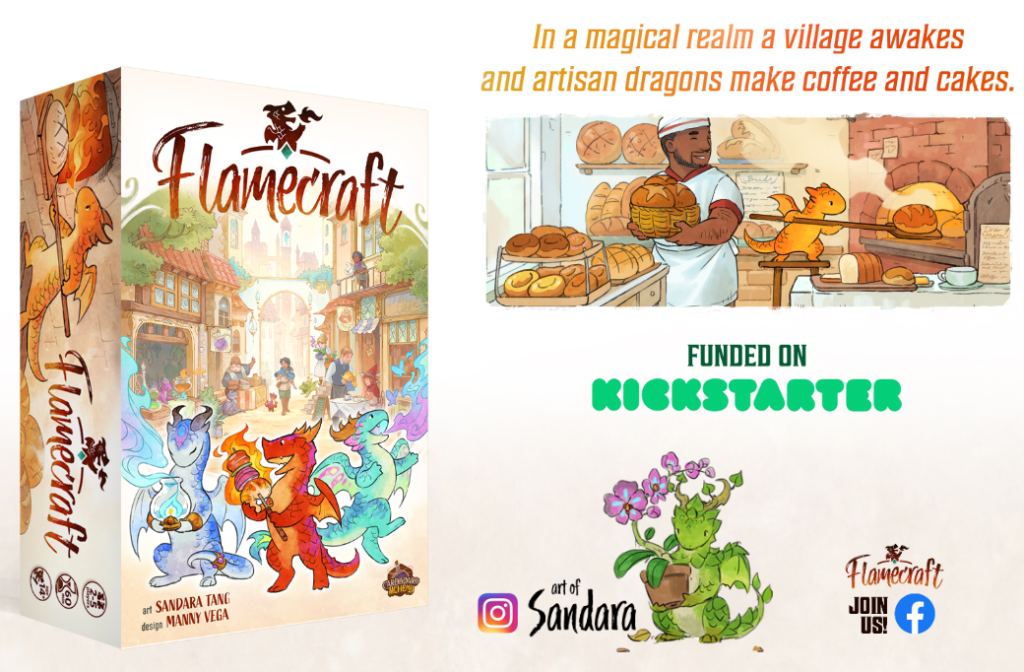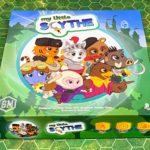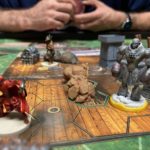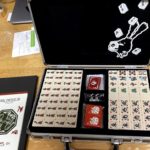Flamecraft? It’s like Lords of Waterdeep, except instead of being one of the secret masters of city, you knew a lot of cute little dragons, some of whom were fancy. And instead of building shops for dark deeds and hidden quests, they were shops where you could bake bread, or cut some meat, or grind up nice smelling herbs into potions, and instead of fighting against corruption, you just wanted yourself and your dragons to have the best reputation in town.
That would be Cardboard Alchemy’s Flamecraft, kickstarted last year, and arrived here last week. Pretty darn quick!
We weren’t able to have the full family game night due to sickness, but we really wanted to play the game, even though we just received it a few days ago (and our plushie is still on its way).
The “game board” is a long, scroll-like mat that gets rolled out along the length of the table. There are the six starting shops that can be used to produce any of the game’s resources (food, coin, goods, and Artisan dragons), and they include an enchanted forest, a bakery, a butchery, a potion shop, and a jeweler. Each shop has a different icon, and the resources it produces are listed in the upper left hand corner of the mat.
Players start the game with two Artisan dragons and two Enchantment cards. On their turn, they can either gather resources from a shop or cast an Enchantment.
To gather resources, they take the resources listed on the shop, its enchantments, or the dragons that are played on that shop. They can then “fire up” the abilities of an Artisan dragon played to that shop. To cast an Enchantment, they choose one of the Enchantment cards on the play met and pay the listed resources. Then they resolve the Enchantment, which usually gives them some combination of resources, Artisan dragons, or Reputation points, by enchanting a shop of the same type as the card.
At the end of their turn, they check to see if they need to expand the town (because they have fully staffed a shop with three dragons), then they discard down to their limit of six cards and seven of each resource and refresh the face-up Enchantments and Artisan dragons.
The game ends when the Artisan deck or Enchantment deck runs out. The player with the most Reputation points at the end of the game wins. Our first game took a little over half an hour to play, so it’s a game that doesn’t outstay its welcome… unlike Lords of Waterdeep, which can take a fair amount of time to play through a game. (Unlike Lords of Waterdeep, you only get one “worker”, which does tend to speed things up a bit).
Since all the resources each player has is public information, including the number of regular and fancy dragons each holds, gameplay is a mix of working on your own goals while trying to block the opposing player from casting enchantments or fully staffing shops with dragons. It doesn’t really get deeper than that.
Some rules in our playthrough weren’t entirely clear (to me, anyway). The coins you get are sometimes required for an enchantment, but are usually wild and can be used as any resource for the purposes of enchantments. There’s also no limit on the number of coins you can hold. Getting new Artisan dragons also confused me a bit… as far as I know, the main way of getting more dragons is by asking a Bread Dragon to summon one… which is… I don’t know… weird, I guess.
My take: I can’t wait to play it again with the full crew
